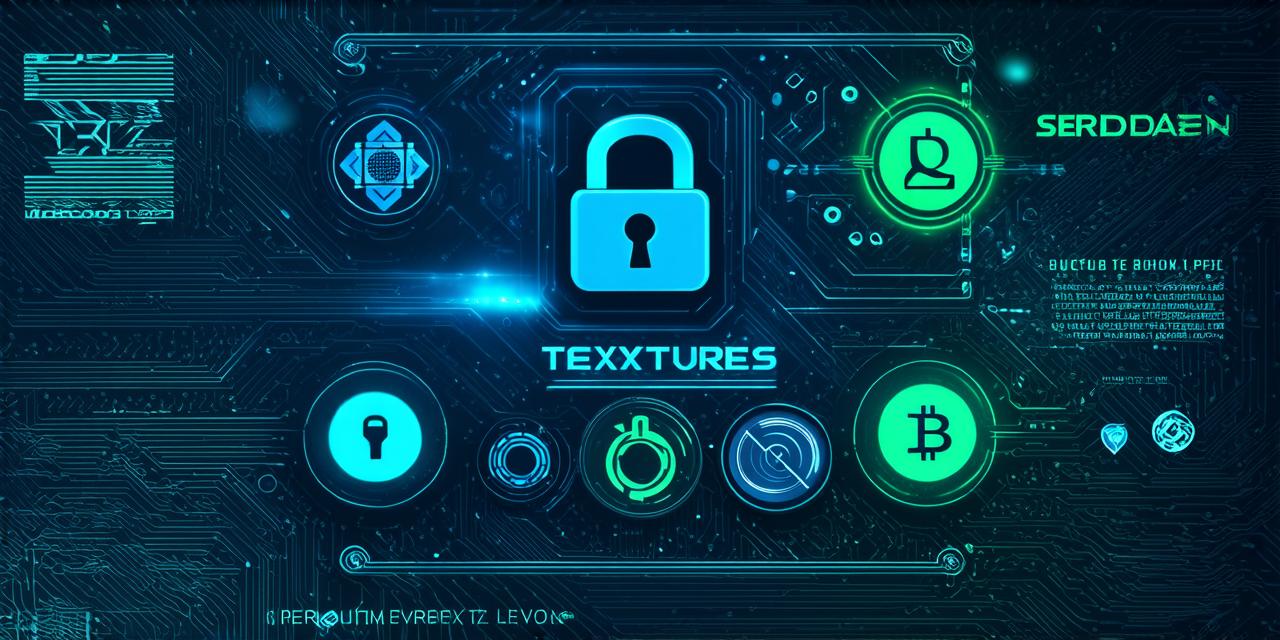Introduction to Blockchain Technology
Blockchain technology is a decentralized, distributed ledger that records transactions in a secure and transparent manner. It allows multiple parties to share data without the need for intermediaries, such as banks or governments. This has led to the creation of various cryptocurrencies, such as Bitcoin and Ethereum, but blockchain technology has also been used in other applications, including supply chain management and voting systems.
Ethereum: The Most Popular Blockchain Platform
Ethereum is currently the most popular blockchain platform, with a market capitalization of over $500 billion as of August 2021. It was created in 2013 by Vitalik Buterin and has since become the foundation for countless decentralized applications (dApps). Ethereum’s smart contract functionality allows developers to build complex applications on top of the platform, which has led to its widespread adoption.
Ethereum’s most notable achievement is the creation of Decentralized Finance (DeFi) applications. DeFi applications allow users to access financial services such as lending and borrowing without the need for intermediaries. Ethereum’s popularity in this space has led to the development of over 10,000 DeFi applications, with a total value locked (TVL) of over $200 billion.
However, Ethereum has several drawbacks that have limited its scalability and adoption. One major issue is the high gas fees associated with executing transactions on the platform. Gas fees are paid in Ether, the native cryptocurrency of the Ethereum network. The cost of gas fees can vary greatly depending on the time of day, network congestion, and other factors, making it difficult for users to predict how much they will have to pay.
Another issue is the scalability limitations of the Ethereum network. The platform is currently experiencing significant congestion, which has led to long confirmation times and high gas fees. This has made it difficult for developers to build applications on top of the platform, as transactions can take hours or even days to be confirmed.
EOS: A Potential Alternative to Ethereum
EOS is a blockchain platform that was created in 2018 by Dan Larimer. It was designed to address some of the scalability and performance issues associated with Ethereum. EOS uses a delegated proof-of-stake consensus algorithm, which allows for faster transaction processing and lower gas fees.

EOS has also focused on building infrastructure for decentralized applications, including gaming, social media, and supply chain management. It currently has over 300 dApps built on top of the platform, with a total value locked (TVL) of over $25 billion as of August 2021.
One of EOS’s main advantages is its scalability. The platform can process up to 2 million transactions per second, making it much more efficient than Ethereum. This has led to the development of applications that were previously not possible on the Ethereum network, such as high-frequency trading platforms and gaming dApps.
However, EOS has also faced criticism for its centralized governance model. The platform is run by a group of 21 elected witnesses who are responsible for managing the network and making key decisions. This has led to concerns about potential conflicts of interest and lack of transparency.
A Comparative Analysis of Ethereum and EOS
In terms of market capitalization, Ethereum is currently the largest blockchain platform, with a market cap of over $500 billion as of August 2021. EOS comes in second place, with a market cap of over $25 billion.
In terms of dApp development, both platforms have seen significant growth in recent years. Ethereum has over 10,000 dApps built on top of the platform, while EOS currently has over 300 dApps. However, it’s worth noting that many of these dApps are still in development and may not be fully functional or widely adopted.
In terms of scalability, EOS clearly outperforms Ethereum. It can process up to 2 million transactions per second, while Ethereum currently experiences significant congestion and high gas fees. This has made it possible for EOS to build applications that were previously not possible on the Ethereum network.
In terms of governance, both platforms have faced criticism. However, it’s worth noting that Ethereum is currently in the process of transitioning to a more decentralized governance model, which could improve transparency and reduce potential conflicts of interest.
Conclusion: The Future of Blockchain Technology
Both Ethereum and EOS have their strengths and weaknesses, and it’s difficult to say which one will ultimately be the leader in blockchain technology. However, it’s clear that both platforms are making significant contributions to the development of decentralized applications and the growth of the blockchain industry as a whole.
As the technology continues to evolve, we can expect to see further innovations and improvements in scalability, governance, and security. Ultimately, the success of blockchain technology will depend on its ability to address real-world problems and provide value to users across industries.
